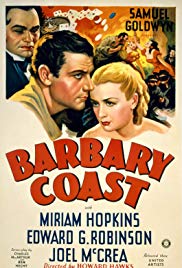Ask and lead your child through the answer to the Quick Discussion Question and the Bad Association Discussion Question.
In 1848 gold was discovered at Sutter’s Mill near San Francisco. Gold fever gripped the nation and thousands of men left the East for the gold fields. The mining camps and towns that grew up in or near the gold fields were almost exclusively populated by men. The only women were prostitutes, “Mexicans,” or “Indians,” who were considered to be about the same. There were very few “white” women. Along with the prospectors came those who were ready to take the prospectors’ gold in gambling halls or by selling equipment and supplies to them at inflated prices.
Tens of thousands of men migrated to California during the Gold Rush. The California population rose from 90,000 in 1849 to 220,000 by 1852, the year in which gold production was the greatest. The Gold Rush lasted just six years, until 1854, when the mining became dominated by large companies.
In the West, before law and order took hold or when corruption got out of hand, citizens formed vigilante committees which rendered rough justice with guns and rope. Lynching (named after Charles Lynch, a justice of the peace during the revolution who dealt out extralegal sentences to Tories) was sometimes used by vigilante groups to discipline wrongdoers who bought off or evaded the law. See Learning Guide to To Kill a Mockingbird.
While most of the men who came West were poorly educated, a few had classical educations. Ulysses is the Latin name for Odysseus, who, in Greek mythology, had ten years of adventures while trying to get home from the Trojan War. Harpies in Greek Mythology are bird-like monsters with heads of old ugly women who were agents of divine punishment.
Medusa in Greek Mythology was a monster with snakes in her hair. One look at her turned you to stone. Balboa was the Spanish adventurer who first saw the Pacific Ocean.
Before a city could afford paving stones for the streets, during the wet season, the streets would become a morass of mud, often many feet deep. This was a frequent problem in the West. The Gold Rush was a great boon to San Francisco, and it was California’s largest city until the 1920’s when Los Angeles surpassed it.


